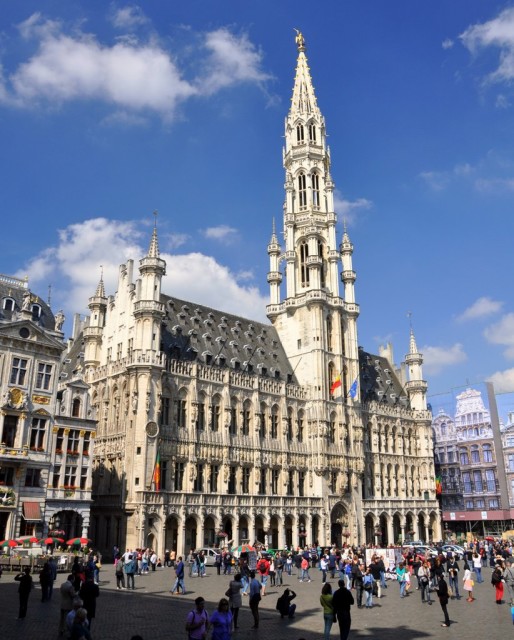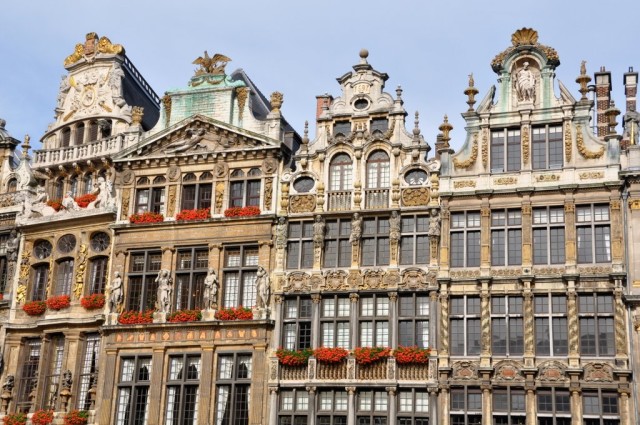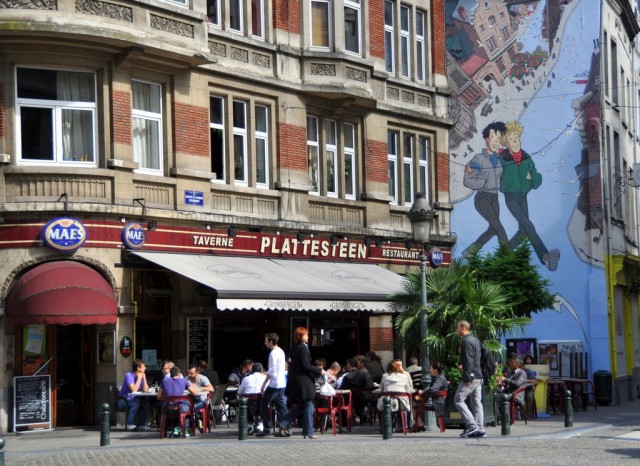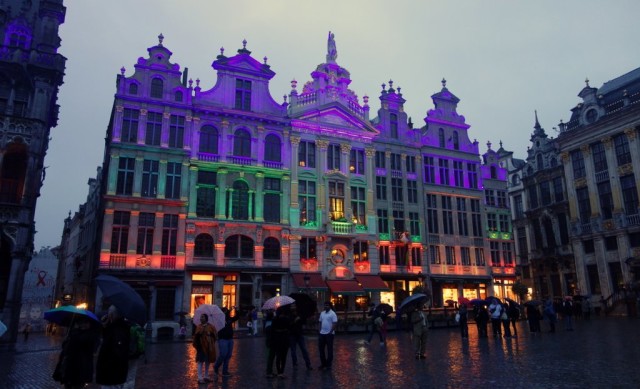I’ve always had a soft spot for Brussels. On my first-ever guidebook research trip for Rick Steves, back in 2001, Belgium was the last stop of a hectic two months spent very steep on the learning curve. After all that hard work, Brussels was the cherry on top of the sundae…or, maybe, the waffle.
On that first trip, Brussels’ Grand Place — its aptly named main square — left me speechless. And it still gets my vote for most fanciful square in Europe. Whimsical gables with gilded spires joust along the top fringe of the square. The bold Gothic tower of the City Hall rockets toward the sky. Statues seem to have a dialogue over the heads of Eurocrats and tourists nursing overpriced beers.

A wonderfully eclectic mix contributes to Brussels’ identity. The birthplace of Tintin, it’s home to Belgium’s deeply respected comic book industry. Giant comic panels adorn buildings all over town. (If you ask a Belgian twentysomething what they want to do for a living, and they say, “Comics”…nobody laughs.) It’s the capital of a refined beer culture, where the best brews aren’t on draft — the really special ones are in bottles. Along Brussels’ “restaurant row,” Rue des Bouchers, buzzing red-neon signs invite tourists to pull up a tipsy sidewalk table and dig into a bucket of mussels. And, of course, Brussels’ top icons are a gigantic atom (The Atomium, the Belgian answer to the Space Needle, left over from a World’s Fair) and a statue of a little boy relieving himself: the (in)famous Manneken-Pis. Sure, these are all clichés. But in Brussels, at least they are delightful clichés.

Beyond the tourism, Brussels is a complex tapestry of Europe, and of the world. They say that Brussels’ most-spoken language is not French or Flemish, but English — the lingua franca of the many international diplomats, businesspeople, and immigrants who call the city home.
On that first visit, back in 2001, my B&B host put the fear of God into me about his hometown. A mild-mannered, soft-spoken Belgian gentleman, he checked me into my ramshackle room, spread out a map of the city, and started drawing X’s over whole neighborhoods. “Don’t go here. Don’t go here. Don’t go here. And when you leave the building, it’s fine to turn left, toward the Grand Place. But whatever you do, don’t turn right.” Pressed for details, he said — as kindly as such a thing can be said — that it was all those African and Middle Eastern immigrants who were ruining the city. It seemed to me he was an artifact of an earlier time — trapped in amber as the world changed around him. A year later, he (wisely) retired.
On later visits, I shed that initial fear and ventured deeper and deeper into Brussels — coming to understand that most locals don’t share that paranoia. In fact, most Bruxellois seem to view the city’s diversity as an asset. They get a kick out of living in such a melting pot. One of them joked, “The South Train Station is in a Muslim immigrant neighborhood. The North Train Station is near a red light district. So as you walk from one end of town to the other, you go from seeing women entirely covered to women entirely uncovered.”
On my most recent trip to Brussels, I checked out the up-and-coming Matongé neighborhood, wedged between the European Parliament and the Royal Palace. One out of every ten Brussels residents claims African ancestry, and Matongé was an early center of “Belg-ican” culture. But in recent years, Matongé’s fine old Art Nouveau buildings and proximity to the EU HQ have spurred gentrification. High rents are forcing out many original residents; today, Congolese hair salons share the block with Pakistani restaurants and native-Belgian hipsters and yuppies.
I found Matongé to be the most diverse — and, not coincidentally, most appealing — neighborhood I’ve seen in Brussels. A cheery “Smile! You are in Mantongé” sign marks the entrance to the produce market, where you can buy cassava and plantain. African-food-for-European-palates restaurants and trendy Belgian brasseries made it hard to pick a place for dinner. And on that balmy summer evening, everyone just seemed to be hanging out and having a wonderful time. Unlike my B&B host from all those years ago, I didn’t feel fearful. I felt alive.

One of the European Union’s core values is an idealistic commitment to diversity — and nowhere more so than in Brussels. Diversity isn’t always easy. But it’s worth the effort. Europe’s xenophobic politicians and ISIS suicide bombers don’t agree on much. But they both seem to get very uncomfortable anytime different cultures mingle too closely — as is the case in Brussels.
By the way, I’m preparing for a trip to Europe. I take off in less than a month. Am I still going? You’d better believe it. Maybe I’m naive and idealistic. Blame the Europeans who have taught me that that’s a much more enjoyable way to view the world than through a lens of anger and cynicism. Tragedies come and go. But once the terrorists have been captured and the city has had the chance to mourn, Europe always remains Europe.
